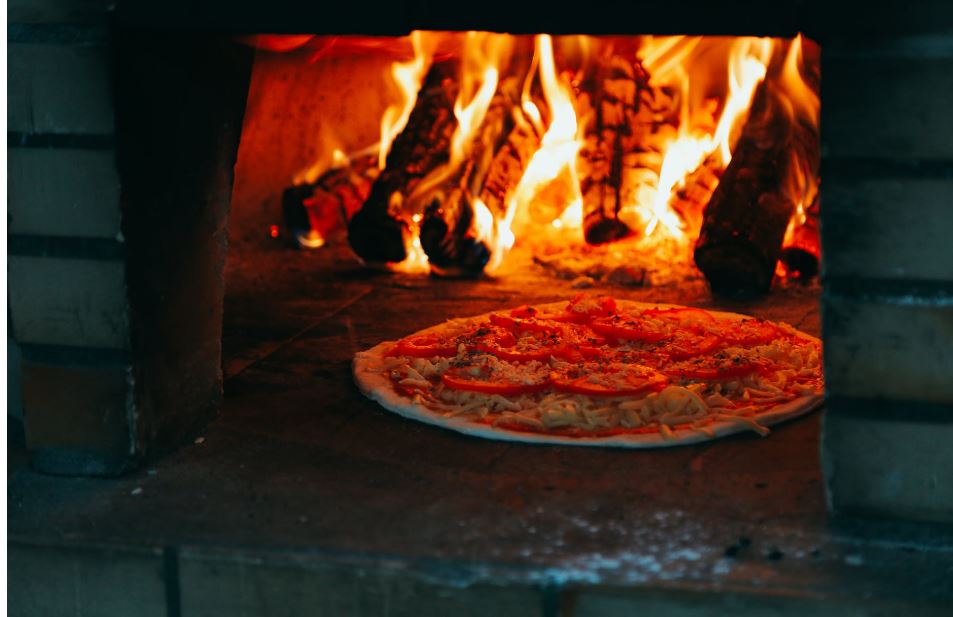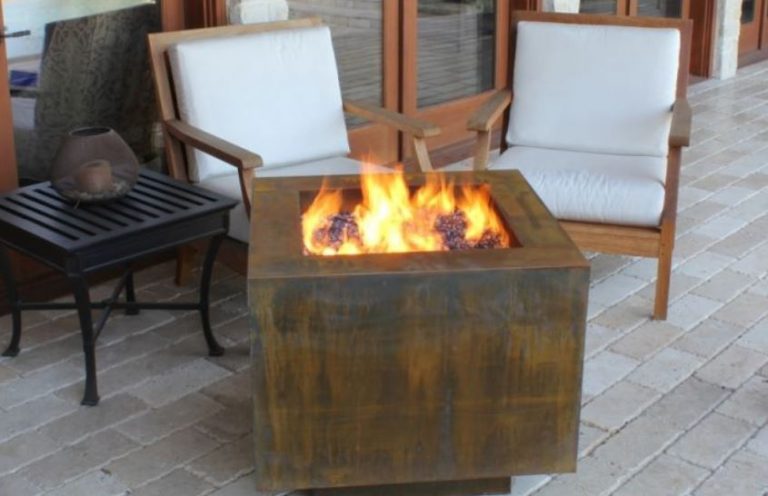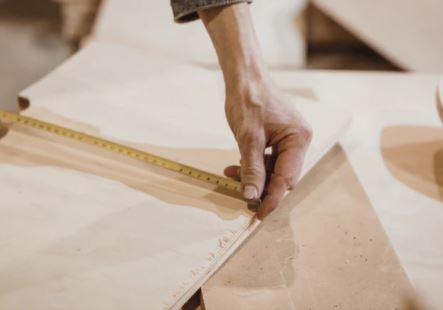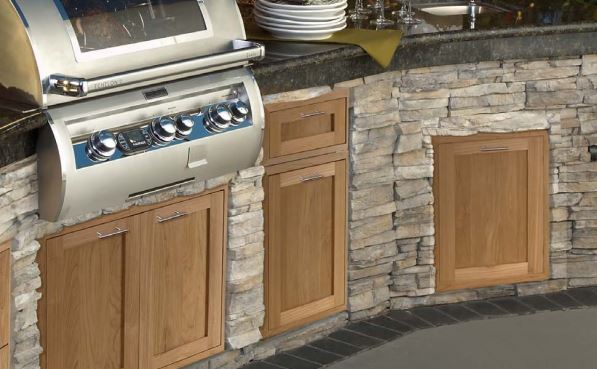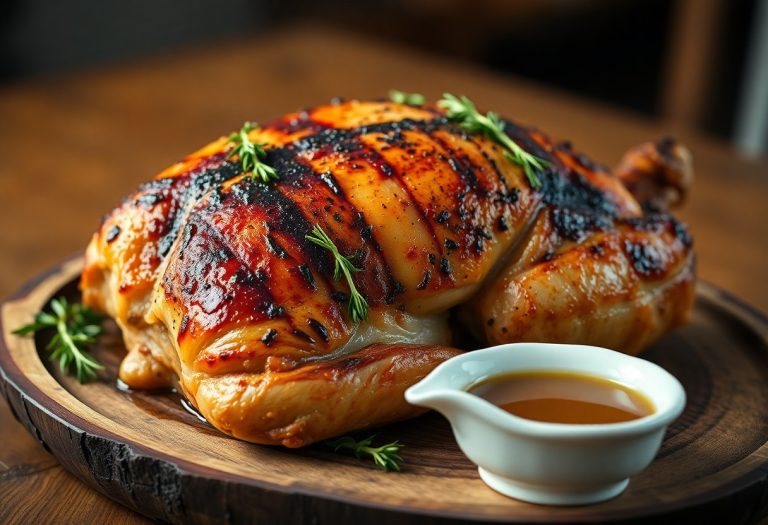The Great Wood Fired Pizza Oven Debate – Which Wood is Best?
You’ve bought or built a wood-fired pizza oven in your outdoor kitchen. You’re ready to fire it up and start making those delectable wood-fired pizza recipes. Now you need wood to build your fire, but what type?
Which Wood is Best for Wood Fired Pizza Ovens?
A seasoned and dried hardwood is ideal for pizza ovens. The best of the hardwood options is oak because it’s safe, burns tremendously hot, and is easier to buy locally than the other hardwood choices. With over 150 species of oak trees, you can usually source oak wood locally which saves on shipping costs.
The type of firewood you use in your pizza oven can affect the cooking time, consistency, and flavor of your pizza. Everyone seems to be focused on how to create pizza rather than the sort of firewood used to cook it, which is an important aspect of the process.
Not all woods are suitable for use in a wood-fired oven, and not all fire woods contribute to the savory flavor profiles of wood-fired cookery. The type of firewood you use in your pizza oven can affect the cooking time, consistency, and flavor of your pizza. Everyone seems to be focused on how to create pizza rather than the sort of firewood used to cook it, which is an important aspect of the process.
Read on to discover the factors to consider when choosing the perfect firewood for your pizza oven, as well as the pros and cons of the top six finest woods for pizza ovens.
Decision Factors in Deciding Which Wood to Use in a Pizza Oven
Hardwood vs Softwood
For a pizza oven, hardwood is the best option. Hardwood has the advantage of burning at a higher temperature and for a longer period of time than softwood. Hardwood also produces hotter coal, which allows the pizza oven to stay hotter for longer.
The temperature of a wood-fired pizza oven should be 905°F or 485°C. Softwood does not provide enough heat to heat your pizza oven to the desired temperature, making it unsuitable for use as pizza oven fuel. Because softwood is less dense, it burns more quickly, requiring more frequent feeding.
Another advantage of hardwood is that when it burns, it produces fewer sparks and smoke.
Pizza ovens have endured the test of time in restaurants all over the world because they are a cooking method that extracts the maximum flavor from the food they contain.
Its strong walls and domed form allow smoke to move freely around its interior, ensuring even heat distribution and the highest possible cook quality for your pizza.
All of this is important because if the wood you use is cheap or bland, it will detract from the entire cooking process.
If you’d want to try a hardwood other than oak, here’s a quick guide to some more common wood species:
Pecans have a nutty flavor that goes well with breaded foods.
Cherry does not burn as fiercely as oak, but it does provide a small sweetness to your pizza.
Hickory burns hotter than oak and imparts a distinct wood-fired flavor.
Another popular fruit wood that may be used to give flavor to your pizza is apple.
Hardwood Heat Producing Characteristics
Hardwoods have a higher density than softwoods. This means they produce more heat for the same amount of wood, making them an excellent solution for wood-burning pizza ovens that require blistering temperatures. Heat affects not only how quick a pizza can cook, but the consistency of the food.
It will be easier to maintain a decent cooking temperature over the cooking period if you build up the fire to be somewhat hotter than you are cooking.
The heat produced by hardwoods will allow you to cook a pizza faster, but will also affect the consistency of your crust.
At 900°F, pizzas will be ready in about 90 seconds. Softwoods will take longer to get the oven hotter, if they even get the oven to 900°F, and the pizza will take around 4 minutes to cook. As previously said, this will transform the pizza’s dynamic to a dryer crust. The quick cooking produces a delicate interior and crisp edge to the crust.
To reach those higher temperatures and burn continuously without excessive smoke, the ideal wood for your pizza oven must be completely dry. (See moisture content below.)
Because it is easily available and burns extremely hot, oak is arguably the most preferred type of wood for making pizza.
How Does Moisture Content Affect Wood for a Pizza Oven?
In your pizza oven, always try to use kiln dried wood. The combustion process will be less efficient if you burn wet or damp wood. It will convert less organic wood materials into heat once you light it– if you can light it at all. Unfortunately, this means your pizza oven’s temperature will be too low to get a crispy crust. Simultaneously, the wet or damp wood will emit large amounts of particulate matter into the air, some of which will land on your pizza.
Don’t assume a piece of wood is dry just because it doesn’t feel damp or wet on the inside; there could be plenty of moisture there.
A tree’s moisture content is normally around 50% when it is cut or falls to the ground. The moisture level of wood that has been seasoned for a year typically lowers to 20-30%, but the wood has already begun to degrade and become less thick.
Kiln drying freshly cut firewood at 250 degrees for 48 hours removes a lot of moisture, kills all bugs, fungus, and mildew, and maintains the wood thick for an extremely high burn temperature. The moisture percentage of hardwoods used in wood burning pizza ovens should be between 5 and 10%.
How to Season Firewood
If kilned dried firewood is not available, or if you prefer to harvest your own wood for your pizza oven, then you will want to season the wood or buy seasoned wood. Greenwood, or wood that has recently been cut, has a lot of moisture in it. This moisture reduces the temperature at which the firewood burns. The reason for this is that when wood is burning, it takes a lot of energy to evaporate all of the surplus water. Greenwood has a 100% moisture level, when pizza oven fuel should have a moisture percentage of less than 20%, preferably 5-10%.
Moisture will evaporate from wood as it dries. This is referred to as “air-drying” or “seasoning.”
Seasoned wood has been exposed to the elements for an extended period of time. Seasoned wood has a moisture content of 20% or less, making it ideal for use in your pizza oven.
If the wood includes a lot of water, a lot of energy is squandered by evaporation of moisture while it burns, hence seasoned wood burns at a higher temperature. This is energy that would have been used to heat your pizza oven otherwise. When you use seasoned wood, your pizza oven will become hotter.
Greenwood, or firewood that has not been thoroughly dried, catches fire more easily than well-seasoned wood.
A few tips about using dried hardwoods:
Avoid using woods with a lot of sap, since this may cause creosote and soot to build up in your chimney and oven floor. If you make this mistake, you can make up by using clean-burning options such as oak.
Too dry woods are also bad for your pizza oven, as they can produce a lot of smoke and damage your dish.
Check for minor radial cracks and darker cut ends to detect whether your pizza oven firewood is too dry for your oven. If your wood has them, don’t use it because it’s too dry.
Finally, if you want to gather your own pizza oven firewood, early Spring or late Winter are the best times to do it, since they will have dried up over the summer.
How Much Firewood Do You Need for a Wood Fired Pizza Oven?
So, how much wood do you really need in your oven when cooking? To get your fire going and your oven up to temperature, start with roughly 5 small to medium pieces of wood.
A medium pizza oven’s usual length of wood for cooking is 12 inches. Smaller bits of wood are usually easier to start a fire with before adding larger pieces.
Depending on the heat retention of your oven (for example, brick ovens retain heat better than stainless ovens), you may simply need to add a few more pieces of wood to keep the temperature stable, or you may need to add a piece of wood as needed while cooking pizzas.
When buying a significant quantity of wood, it is often offered as a “cord.” When the timber is stacked four feet high, four feet wide, and eight feet long, it is called a full cord .
What Size Firewood Do You Need for a Pizza Oven?
If you’re baking pizzas in a full-sized oven, 16-inch-long pizza cut firewood is recommended. Each cut is 16 inches long and 1-2 inches wide, making it simple to fire and fast generate scorching temperatures. With 6 pieces of this size pizza chopped wood, you can have the fire lighted and up to temperature in 30 minutes. You know the wood will burn hotter and longer than any other wood because it is thick.
If you have a tiny wood-fired pizza oven, a smaller pizza cut is recommended. This wood is suitable for tiny pizza ovens because it is 6 inches long and 1-2 inches thick. Wood will burn really well and quite hot, providing you and your visitors with a fantastic backyard experience!
Flavorful and Aromatic Woods for Pizza Ovens
Fruitwood is a type of hardwood that comes from a variety of fruit-bearing trees. It isn’t as common as other hardwoods, but when it is, it’s an excellent option. Applewood (my personal favorite), cherry, plum, almond, pear, hickory, maple, pecan, mesquite, chestnut, apricot, and nectarine are all excellent alternatives that add flavor and fragrance to your backyard cooking!
Fruitwoods, in addition to traditional hardwoods, can be a tasty addition to your pizza oven, adding a new layer of taste.
Pecan, apple, and plum are all popular options for adding subtle richness to the flavor of your pizza.
It’s worth noting that not all fruitwoods burn as hot as some of the other hardwoods, so use them sparingly and mix them in with your oak or other hardwood of choice. This allows you to keep the heat settings consistent while adding a dash of aromatic taste that isn’t overbearing.
When used in this way, you may try out several varieties of fruitwood to see which flavors go best with your favorite pizza toppings and figure out the optimal concentration ratio for a flavorful addition rather than an overpowering flavor.
Because of its high burning temperatures, mellow flavor, and nice aroma, apple is perhaps the most popular.
Wood Types to Avoid
Never burn laminated woods, such as plywood (or particle board), pressure-treated woods, or anything else that has been painted, chemically treated, or glued. To start your fire going, use bare pallets and construction lumber leftovers as kindling. If you’re not sure whether the wood has been chemically treated, don’t use it. These pollutants should not be present in the air or in your meals.
In your wood burning pizza oven, do not use charcoal. Charcoal creates more carbon monoxide than firewood, which is one reason to avoid it. Carbon monoxide is a safety concern because it is invisible without appropriate equipment. Furthermore, despite the fact that charcoal burns hotter than firewood, it does not transfer heat as effectively within the oven. Flame refraction off the dome, thermal equilibrium, and hot coal transmission are three ways brick ovens get heat. Because charcoal does not produce a direct flame, one of the heat sources in a brick oven is lost.
Red pine and other resinous woods with high sap or oil content should be avoided. This kind of fuel produces a lot of soot, which coats the pizza oven and chimney flue in creosote. You can get rid of it by burning it with a hotter, cleaner-burning firewood like oak. While most normal oven cleaning may be done by yourself, it’s a good idea to employ a certified chimney sweep at least once or twice a year (more often depending on the frequency of use). Pine, fir, eucalyptus, white birch, and cedar are some examples of sticky or oily woods. If you want to flavor something with oily woods, remove the resinous bark to reduce moisture and sap content.

